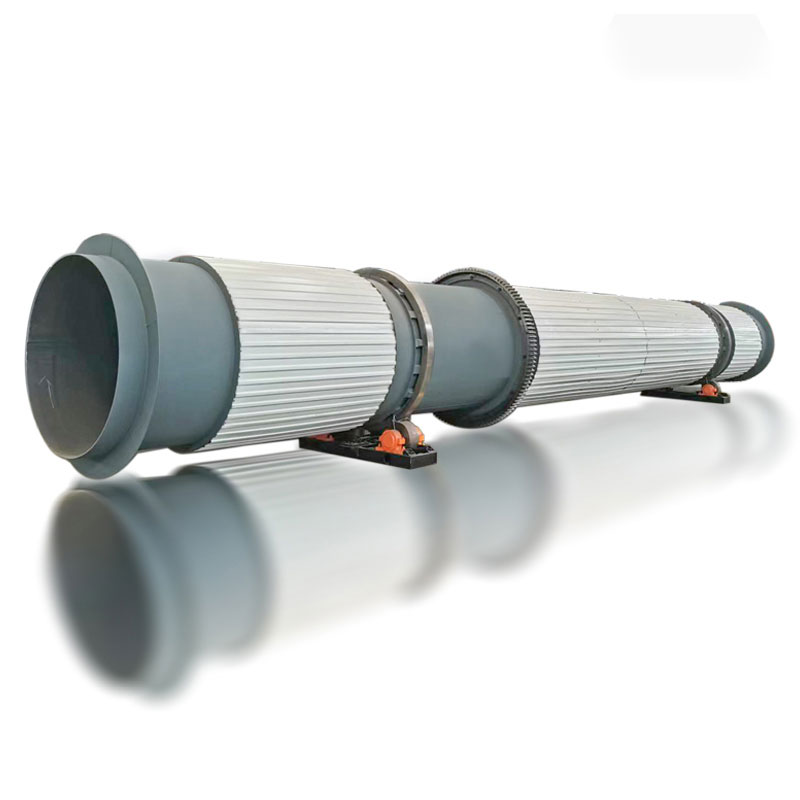What is the operating principle of a direct-fired rotary dryer?
2025-05-21
Direct-fired rotary dryer is a type of equipment commonly used for drying bulk materials. It is widely used in building materials, metallurgy, chemicals, coal, mining, grain and other industries. Its operating principle mainly relies on direct combustion to generate hot air flow, which directly contacts the material for heat exchange to achieve water evaporation and material drying.
1. Basic structural components:
Drum body (rotating drum): cylindrical, can be installed at an angle, and can rotate slowly.
Heat source system: usually a burner that burns coal, natural gas, heavy oil, biomass and other fuels to produce high-temperature flue gas.
Material feeding system: evenly need wet materials into the drum.
Transmission device: drives the drum to rotate slowly.
Raising device: the drum is equipped with a raising plate to raise and sprinkle the material so that it is fully in contact with the hot air.
Discharging system: discharge the dried material from the end of the drum.
Dust removal and exhaust gas treatment devices (such as cyclone dust collectors, bag dust collectors, etc.).
2. Operation principle:
Ignition heating:
The burner is ignited, the fuel burns to produce high-temperature flue gas, and the flue gas enters the drum through the combustion chamber.
Hot gas contacts the material:
The wet material is fed from one end of the drum and gradually moves forward in the drum as the drum rotates.
The flue gas (hot air flow) is in direct contact with the material for heat exchange.
It can be in the form of co-current (hot gas and material flow in the same direction) or countercurrent (hot gas and material flow in the opposite direction).
Evaporation of moisture:
The hot gas evaporates the moisture in the material, and the steam is discharged with the flue gas.
Drying and discharge:
After a period of drying, the moisture content of the material decreases, and it is discharged from the discharge port after reaching the required moisture content.

3. Advantages:
High thermal efficiency and good heat transfer efficiency;
Simple structure and large processing capacity;
Strong adaptability, able to process materials with large particle size or high moisture content;
Directly utilize combustion heat source, no heat exchanger required, low equipment cost.
4. Issues to note:
Direct contact between combustion flue gas and materials may cause pollution problems (not suitable for food and medicine);
Heat source control must be precise to avoid local overheating or incomplete combustion;
Exhaust gas needs to be dust-removed and purified to prevent environmental pollution.
If you are interested in our products or have any questions, please feel free to contact us and we will reply you within 24 hours.


